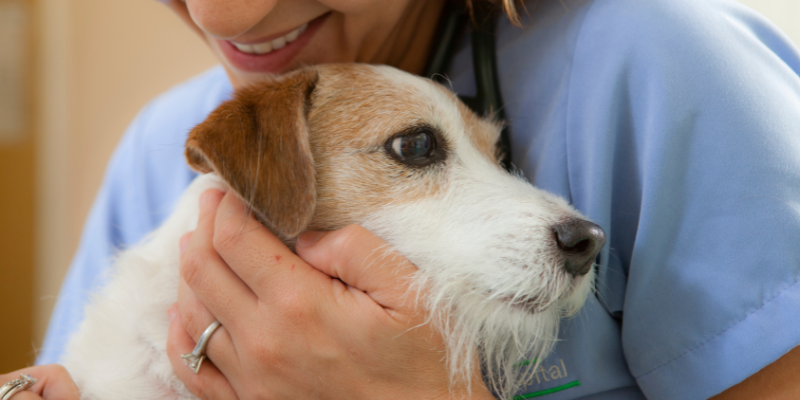If your pet ever suffers a serious illness or injury, you may have to consent to veterinary resuscitation procedures being performed on them. This can understandably feel overwhelming, particularly in an already stressful and upsetting situation.
We’d therefore like to discuss what pet resuscitation actually involves in the hope that, should you ever be in such a situation with your pet, you can feel more informed and comfortable to quickly make the best decisions for your pet and your family.
What is resuscitation?
Pet resuscitation can involve a variety of medical interventions, which may be performed separately or in combination, depending on the condition of that pet.
The first step of resuscitation is always a rapid assessment of the pet to assess its most basic functions: airway, breathing, and circulatory (blood flow) status.
Depending on the pet’s condition, we may then recommend:
- Fluid resuscitation: this involves the rapid administration of calculated amounts of medical fluids into your pet’s vein to help boost their blood volume and circulatory flow ●
- Basic life support: this involves ensuring your pet’s main airway is clear (which may involve the placement of a breathing tube), and assistance with their circulation and breathing through chest compressions and manual ventilation (giving them breaths, usually via an anaesthetic machine and fresh oxygen flow)
- Advanced life support: this involves more advanced measures such as administering adrenalin into your pet’s vein (which can help to stimulate their heart and lung function) and monitoring their heart rhythm with an ECG machine
Conditions which may necessitate resuscitation procedures
Any serious illness that causes a significant disruption to your pet’s blood volume or flow, heart function, or breathing abilities may necessitate supportive resuscitation procedures.
This includes acute illnesses that have caused your pet to become very dehydrated (such as severe gastrointestinal unwellness), and common emergency conditions such as:
- Heatstroke
- Snakebite envenomation
- GDV (a twisted stomach)
- Urinary blockage
- Anaphylaxis (severe allergic reactions)
- Internal bleeding due to tumours on the spleen
Resuscitation procedures are also often required in cases of severe trauma resulting in blood loss, such as a pet being hit by a car.
What can you do to help?
Firstly, should you ever be concerned about your pet’s condition, whether it be breathing abnormalities, pale gums, general lethargy or after witnessing physical trauma, please don’t hesitate to phone us immediately for advice. If we do recommend urgent veterinary assessment, your phone call gives us a “heads up” that allows us to prepare the team for your pet’s arrival. We may also be able to instruct you on any relevant first aid for your pet in the meantime (e.g. starting to cool your pet effectively in the case of suspected heatstroke).
Whilst it’s a distressing scenario to have to consider, it also really helps if you (and your family, if relevant) have previously discussed and agreed on how much medical intervention you would like your pet to receive in an emergency.
Quick action can make all the difference in achieving the best possible outcome for your pet.
If you would like more information on pet emergency care, please have a chat with our compassionate team.






